Taking your dog into the wilderness: How to prepare him?
Do you want to take your dog with you on hikes, camping trips or bushcraft adventures in the wilderness but are unsure if they can handle it? Then read this guide.
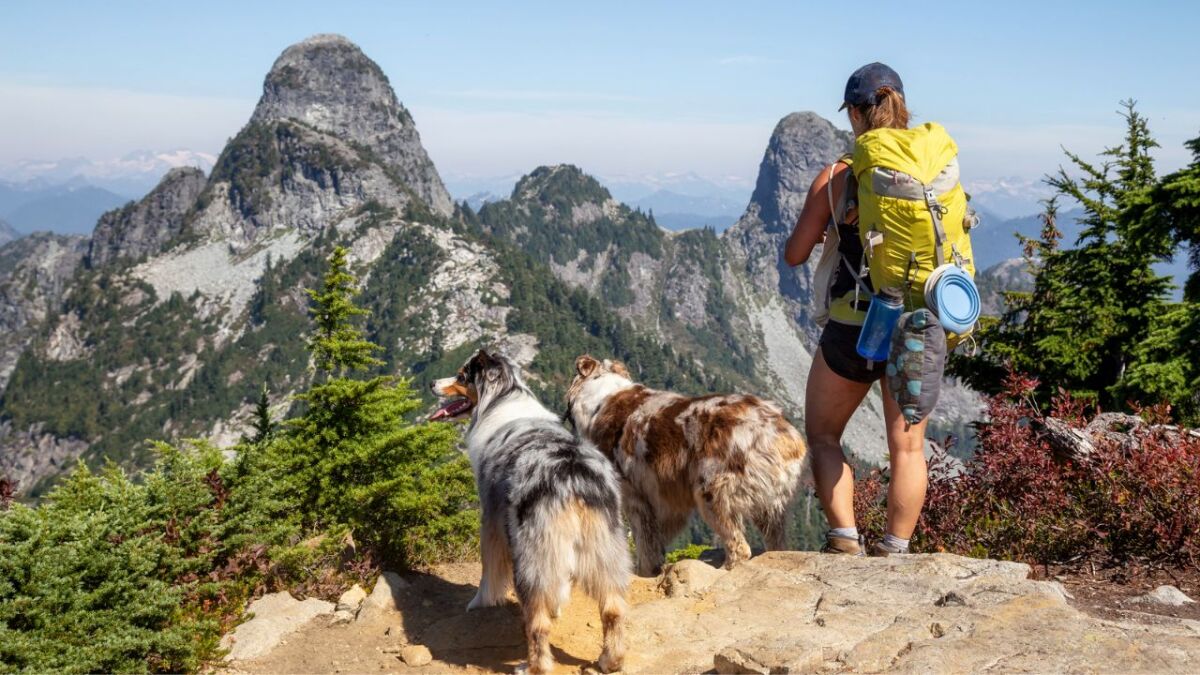

From Martin Gebhardt. Check out my “About me” page.
👉 The key facts from this guide
- Make sure that your dog is prepared for the challenges of the wilderness, including varying weather conditions and physical demands.
- Consider the age and breed of your dog, as not all dogs are suitable for long hikes or intense physical activities.
- Provide adequate supplies, including water and food, and have a first aid kit on hand.
- Train your dog in basic commands and get them accustomed to long walks and different environments.
- Practice emergencies with your dog to prepare them for unexpected events.
- Trust and understanding are crucial for a safe and enjoyable time in the wilderness with your dog.
An excursion into the wilderness with your dog can be an unforgettable experience.
But it is important to ensure that your dog is prepared for the challenges of such an environment.
If your dog cannot adapt to life in the wilderness, it can be dangerous – for both him and you.
In this article, you will learn how to ensure that your dog is ready for the wilderness, so that both of you can have a safe and adventurous time.
Why is it important that your dog is ready for the wilderness?
Before the dog became a faithful companion of humans, there was the wolf. The domestication of the wolf and the emergence of different breeds of dogs may have happened a long time ago, but dogs and wolves are still genetically closely related.
Taking your dog into the wilderness brings the animal back to its roots, in a way.
Furthermore, your dog can accompany you on many outings into nature and provide you with good company. It can infect you with its enthusiasm for even the smallest wonders of nature! It won't question your chosen route or create discussions about food choices. ;-)
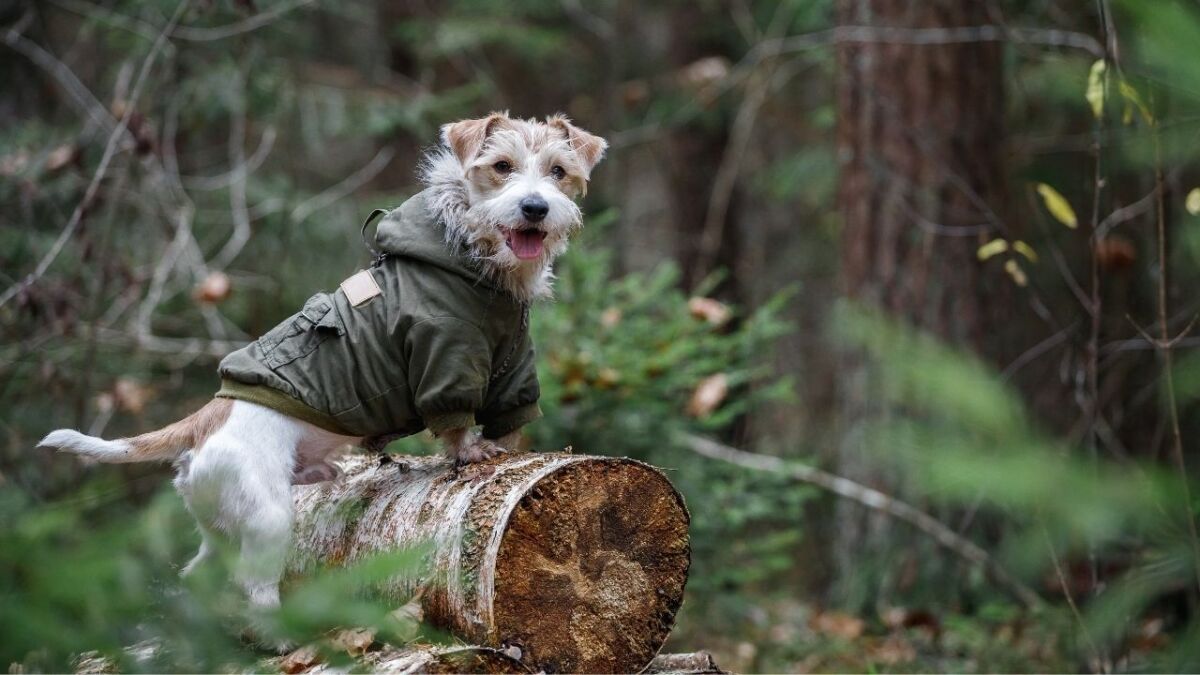
Nevertheless, there are some essential things to consider before you embark on a wilderness adventure with your furry companion!
Because dogs have needs and their inability to speak requires communication and understanding on a different level. This is already relevant in everyday life with your dog, but it becomes critical in the wilderness.
As a first rule, you should prepare appropriately for your first adventure in the wilderness. Otherwise, you will be taking risks that can be avoided with simple precautions.
Find out in the following guide which requires must be met and what requirements you both need to fulfill.
Are all ages and breeds suitable for the wilderness?
Before we can even think about a trip to the wilderness with our dog, you should inform yourself about your dog's age and breed.
Because not all dog breeds are capable of the same things, and also age plays a big role here!
Here are the most important facts:
- Depending on the breed, your dog should be at least 1–2 years old.
- The dog's growth phase must be completed, as longer hikes create too much stress on bones and joints.
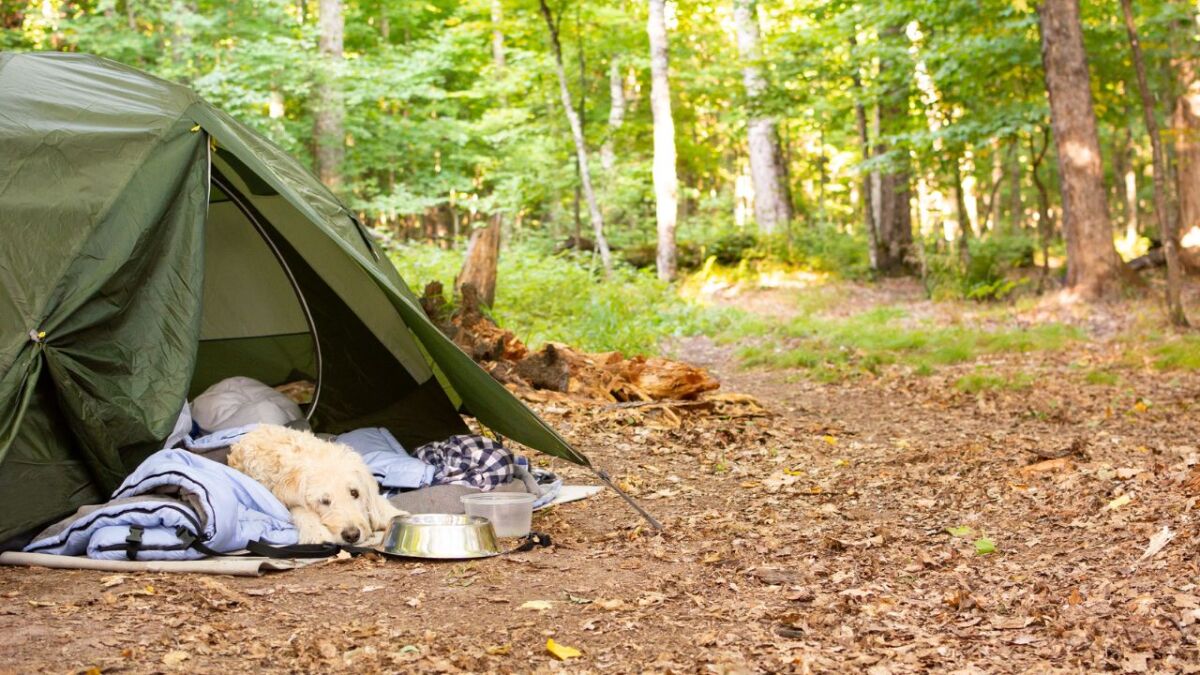
Active and agile dogs often don't shy away from long hikes and feel very comfortable in the wilderness. Small and short-legged breeds have less endurance and are happy to come home after shorter hikes.
Exceptions confirm the rule here. Every dog has an individual character that doesn't necessarily have to fit the general breed description.
My tip: Learn to interpret the language of your dog to know when it's time to stop.
Ensure your dog's health through regular vet visits and sufficient exercise
Vet visits
A veterinary visit is important to monitor your dog's health and to recognize and treat potential health problems early.
Regular veterinarian visits can help your dog lead a long and happy life. It's also essential to have your dog vaccinated regularly to protect them from diseases.
It's also advisable to see a vet if your dog has behavioral issues or if you have questions or concerns about your dog's health or behavior.
Exercise and fitness
For dogs, the same applies as for us humans!
To increase our performance, we need training that challenges us. Regarding your dog, it is significant to not confuse challenge with overexertion.
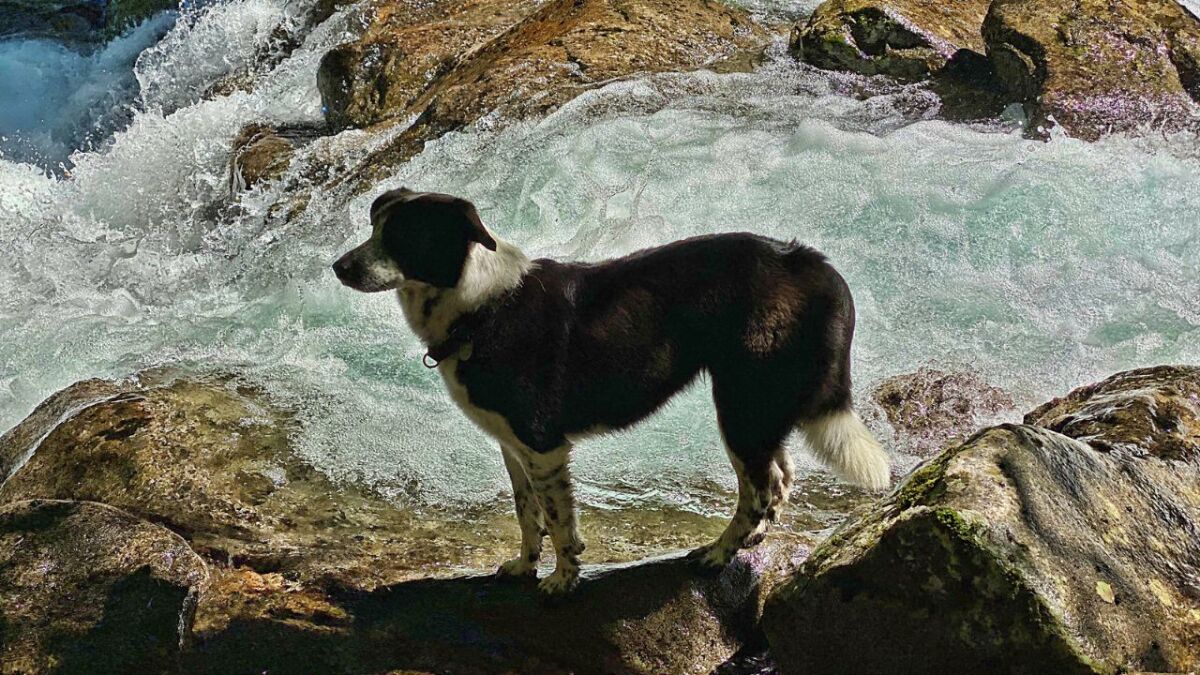
Because your four-legged friend will usually keep going until he collapses from exhaustion.
Here, it is important to gradually accustom the animal to the load. In the case of hiking, it is important to increase the distance slowly. Include inclines and be patient.
You don't need to attend a dog school to prepare for the wilderness. At least, not in terms of physical fitness.
Extensive walks in the forest are enough. There are obstacles and changing surfaces to be found there, so you can prepare well for your time together.
Crossing fallen trees (More about the danger of fallen trees) and narrow passages strengthens your bond and prepares you for risky situations. Here, you can learn a lot about each other!

How many kilometers can an adult dog run per day?
An exact answer to this question depends on various factors, such as the age, breed, and general health of your dog.
On average, healthy adult dogs can run about 5–10 kilometers per day, but some breeds that are trained for long distances can run significantly more.
It is important that dogs be not overworked and have sufficient breaks for rest and hydration. If you are unsure how much your dog can run, you should always consult your veterinarian first.
Here are some signs of fatigue in a dog:
- Energetic behavior
- Lack of self-control
- Excessive panting or licking of lips
- Excessive thirst
- No interest in playing
- Laying down
- Hiding
- Refusing
Heat and Water
As mentioned above, we must keep our dogs in mind for exhaustion. Water plays a big role, especially in higher temperatures.
Ideally, you should choose a route that has several water sources, so you can cool off and drink enough water.
However, additional water for your dog is a must.
Since dogs have trouble drinking from bottles, you also need a bowl. There are foldable bowls that take up little space.
The fact is, humans can cool their body by sweating. Dogs, on the other hand, are hardly capable of this and regulate their temperature mostly through panting. Water evaporates from the tongue, nose, and lungs as they pant. Additionally, dogs can cool down through vasodilation. This expands blood vessels, in particular in the face and ears, and cools down the blood before it flows back to the heart.
Both methods consume a lot of energy and water. Therefore, it is of great importance to carry enough water and to take many breaks on hot days.
A heat stroke can come very suddenly and is deadly.
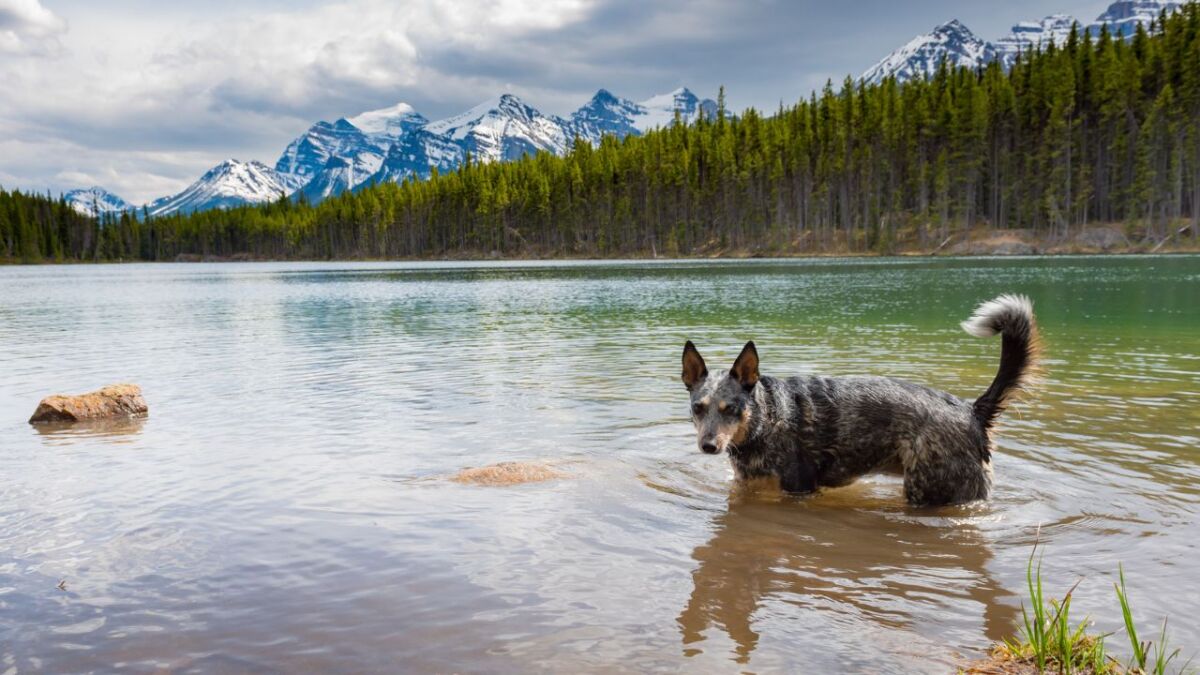
Here are the signs of heat stroke in your dog:
- Heavy, hectic breathing
- Excessive salivation
- Vomiting
- Bright red gums
- Muscle tremors
- Coordination problems
- Seizures
- Loss of consciousness
It is important to understand that dogs cannot simply take off their fur like we can with our clothing.
Although their fur acts as insulation against both cold and heat, at a certain temperature, it simply becomes too hot. The heat sensitivity varies depending on the breed of dog, but a good rule of thumb is:
If I am comfortable in a T-shirt, it is too hot for the dog to exert itself physically.
On those days, you can take advantage of the morning or evening for a more intense workout. If you are out in the wilderness, choose paths with lots of shade and, ideally, bodies of water for cooling off.
What to consider with cows, other animals, and wildlife
Wolves hunt wild animals as well as the occasional sheep in the wild. This hunting instinct is deeply rooted and present in most dogs as well.
Even if your dog has never pursued its hunting instinct, be prepared!
Sheep are often the reason why dogs get lost in the mountains. Our companions detect their potential prey long before we do. Therefore, we should always pay attention to the signs and if the dog is not on a leash yet, change that immediately as soon as you recognize the signs of the hunting mode.
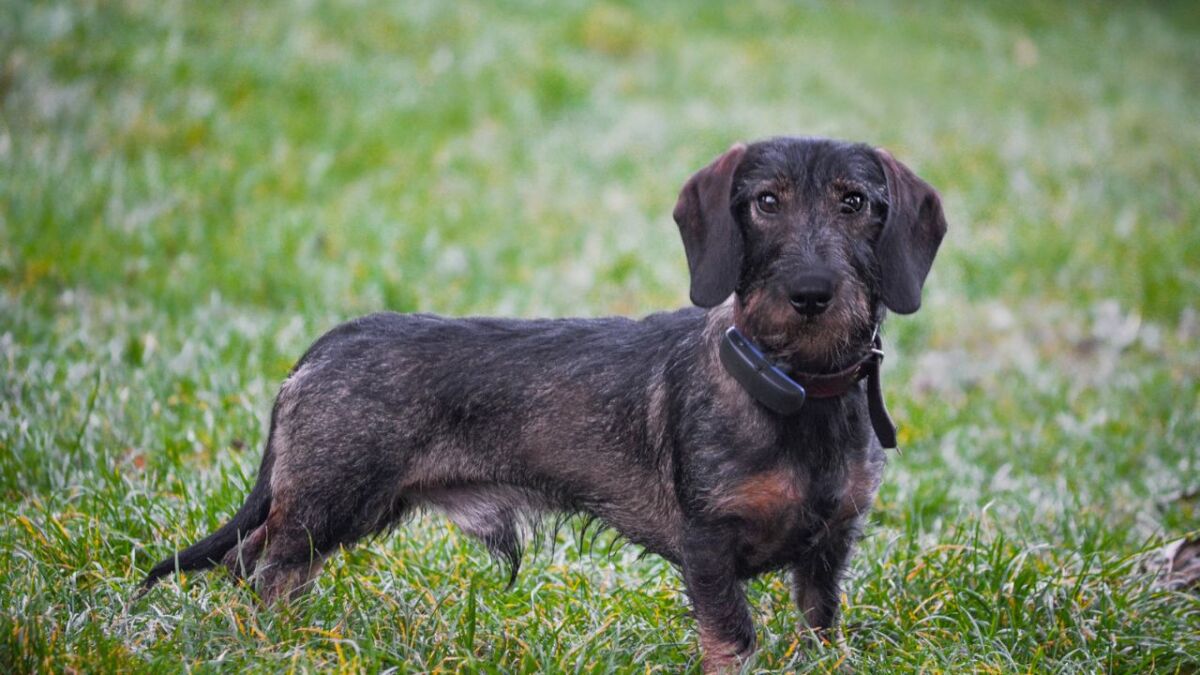
If there is a danger that your dog will react this way, you can equip it with a GPS tracker and be on the safe side.
Besides sheep, cows also play a big role. They may not be hunted, but they could still be considered playmates. However, cows see dogs more as a threat and especially with calves nearby, this situation could end fatally for both of you.
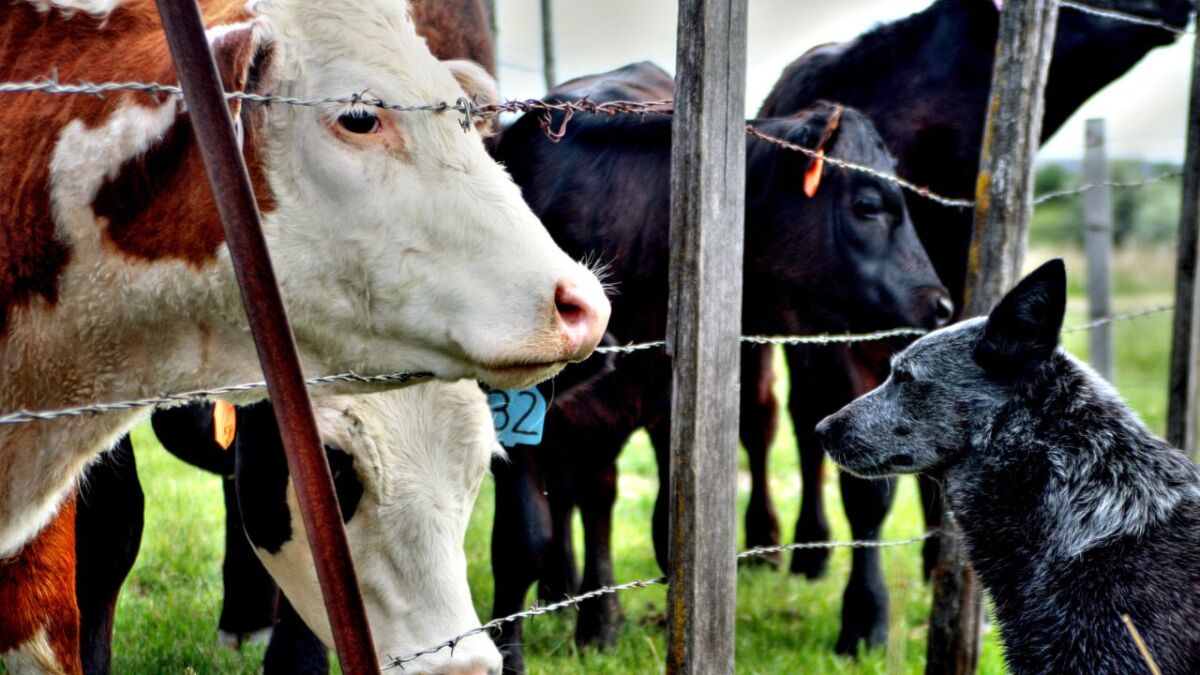
Don't get me wrong, cows are peaceful beings, but particularly in contact with dogs, such a meeting can quickly escalate.
If an escalation is imminent, you should leash your dog and retreat.
Ideally, it won't even get that far. If you have to cross a pasture with cows, keep your dog close to you and pass the grazing animals quickly.
Do you need to consider anything special when it comes to feeding your dog?
Regarding food, you don't need to equip yourself with special foods, but you should just continue with their regular diet. A change can lead to unnecessary side effects, which also brings dangers.
However, the timing of food intake plays a role. You should not feed a dog within an hour before intense physical activity.
This can lead to gastric torsion. This involves a very high gas development in the stomach, causing it to swell and, in the worst case, cut off blood flow to the intestine. This causes severe pain and can also lead to death.
For humans, intense physical activity after eating is also unhealthy. Therefore, coordinate with each other. Eat and rest together. This connects you and you get a sense of what currently you need.
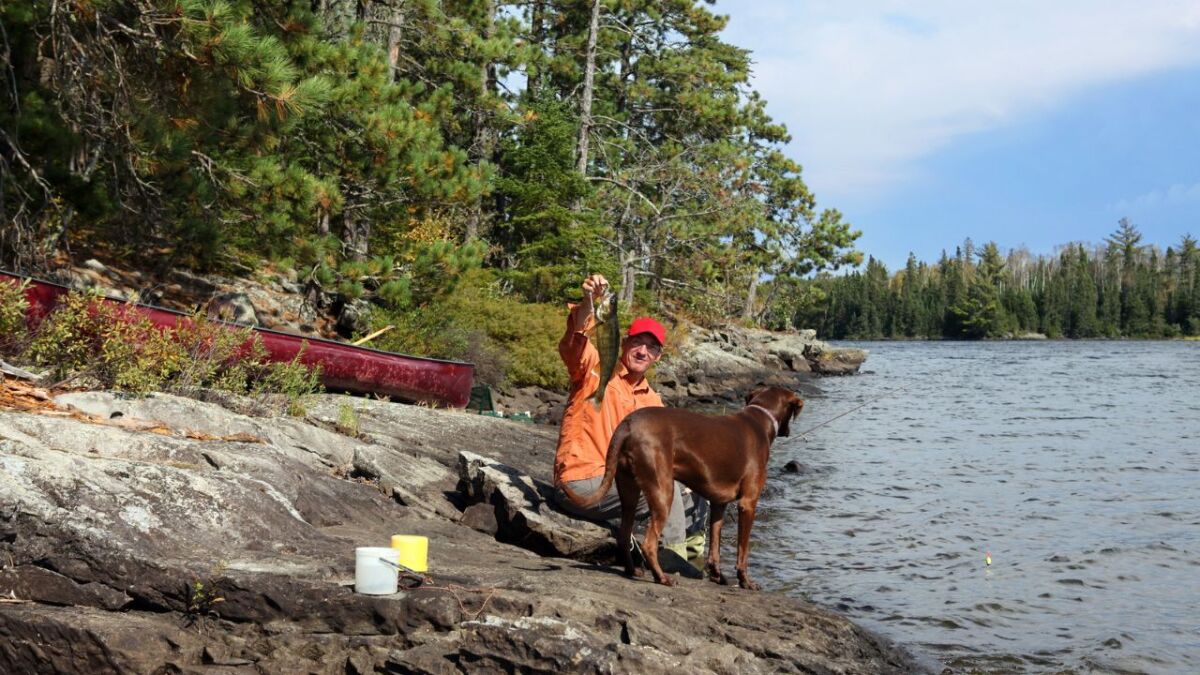
Trust requires time and experience
Trust requires time and experience, but is essential for shared adventures in the wilderness. Trust must be based on mutual understanding.
If you can't trust your dog, you will have little peace of mind in nature and will struggle to relax. Similarly, the dog must also trust you to react decisively in precarious situations and follow you on all your paths.
Self-confidence and self-assurance also play a major role. You need to be able to assess upcoming situations well and correctly judge yourself and your dog, especially in difficult sections. This includes climbing passages, steep slopes with narrow paths or encounters with cows or other animals in the wilderness.
Here, too, it is important to start your adventures with your dog slowly. New situations should be added step by step so that you get a feel for yourself and your dog in new scenarios.
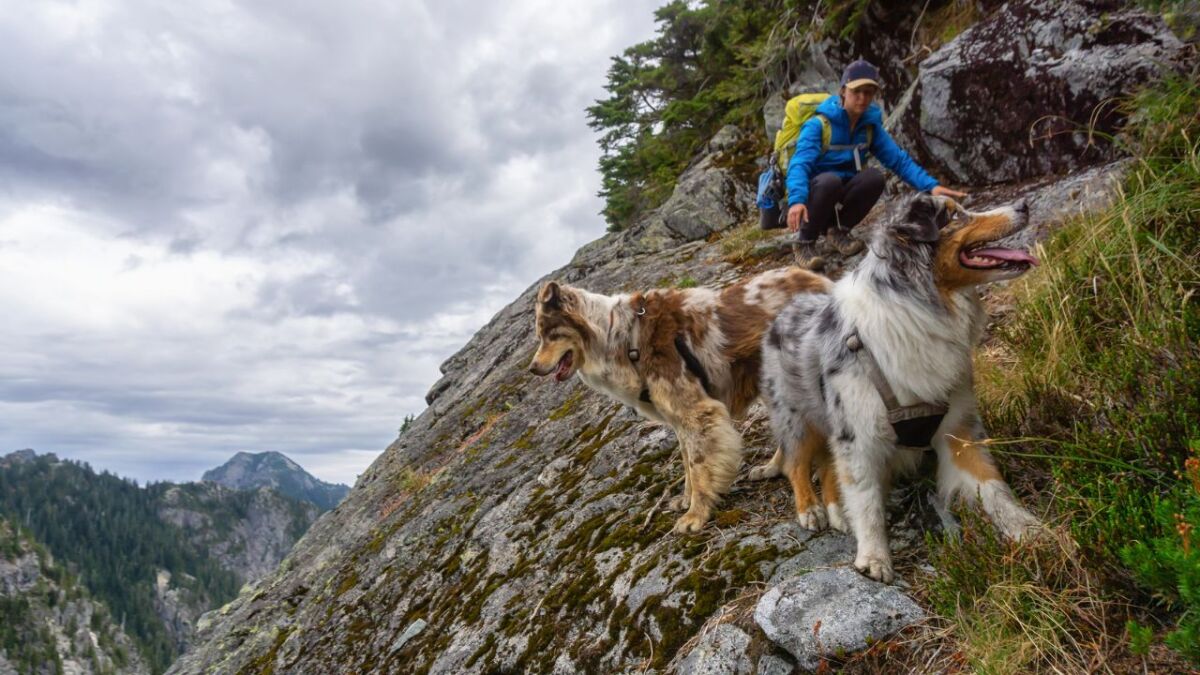
Equipment: Dog harness, leash, and more
First, a well-fitting dog harness is essential. Ideally, a harness with a handle on the back, allowing you to help your companion over obstacles or quickly restrain them in certain situations. Additionally, the dog can wear a collar with a GPS tracker.
In addition, there is the leash. You want to have your hands free to overcome difficult sections, and anyway, a leash in your hand is rather obstructive. Instead, you can wear the leash around your waist. If you have a backpack with a hip belt, this is a good place for a leash.
Furthermore, this creates more eye level with your dog and less power imbalance, as you are largely attached to each other and not holding your dog.
For longer stays in the wilderness, you should consider a dog backpack. However, you must get your dog used to the extra weight beforehand. This way, he can carry part of your provisions and it also strengthens your bond. Often dogs even enjoy doing this, as they contribute their part to the adventure.
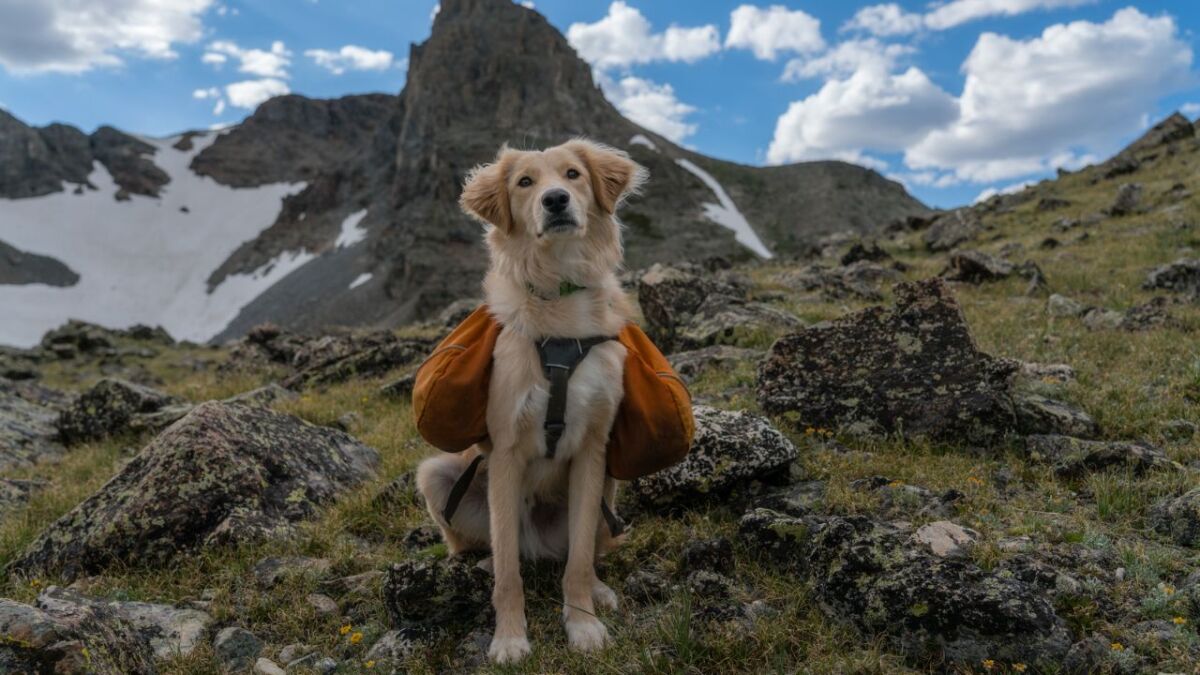
Dogs can carry about 20% of their body weight, but be aware of the risks of heat stroke mentioned above. At higher temperatures, you should therefore forego additional weight for your dog, or at least minimize it.
On steep and rocky sections, there is a risk of injuring the paws. For these situations, there are dog shoes, which you also need to get your dog used to beforehand. At the same time, a first aid kit with tick pliers is highly recommended.
Make sure your dog knows basic commands
It is important that your dog know basic commands so that both of you can be safe and happy in nature.
With a dog that is obedient and follows basic commands, it is less likely that he or others will be hurt. And he can also remain obedient in different situations.
Some of the most important commands that your dog should master are:
- Sit: This command is important so that your dog stays seated on command and does not run around and disturb other people or animals.
- Down: This command is useful if you want your dog to lie down and stay calm, for example, when you have visitors or when you give him something to eat.
- Stay: This command is important so that your dog stays in a certain place instead of running around and possibly getting into danger.
- Heel: This command is useful when you are walking with your dog and want him to walk next to you instead of in front or behind you.
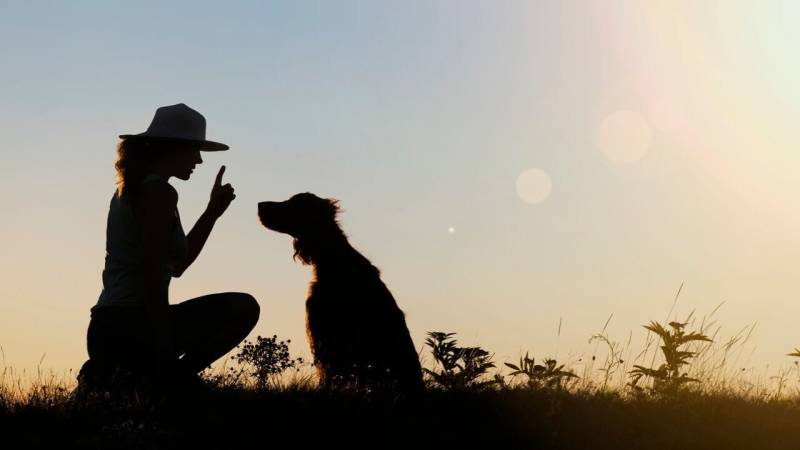
To ensure that your dog masters these commands, you must practice regularly with him and give him clear instructions.
Be consistent and reward him when he executes the command correctly, for example with a treat or praise.
If your dog has difficulty following a command, seek professional help from a dog trainer. They will show you how to teach your dog to follow the commands.
Practice emergency scenarios with your dog to prepare him for unexpected situations
It is advisable to practice emergency scenarios with your dog to prepare him for unexpected situations.
First, familiarize your dog with basic commands like "Sit" and "Stay" so that he understands them when given in emergencies.
Also make him familiar with emergency signals such as sirens or alarm signals so that he is not frightened by them in the future. You can also practice allowing your dog to respond to different emergency scenarios, such as pretending to be unconscious.
Make sure to praise your dog after every successful command, so he understands he is doing something right. With enough practice, your dog will be better prepared for unexpected situations that may arise.
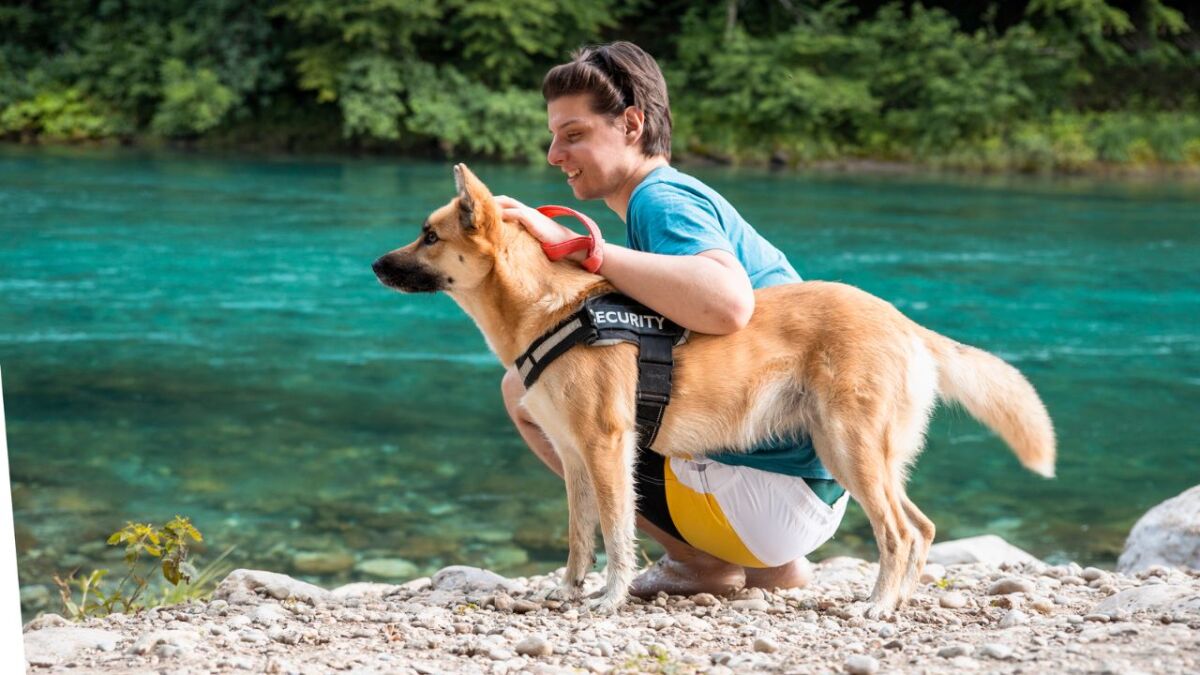
Conclusion: By following these steps, you can ensure that your dog is ready for the wilderness, and you can enjoy hiking or other outdoor activities with him confidently.
As you have already read, precautions are crucial when embarking on an adventure with your four-legged companion in the wilderness.
However, even the most precise preparations won't help if you don't understand your dog's body language. That's why it's crucial to know each other well and trust each other.
If this is the case, the wilderness is open to you, and it's an experience in itself to explore together.
I wish you and your furry companion lots of fun.


Author of the guide
Martin Gebhardt
Hey, I'm Martin. On my blog, you will learn the basics and numerous details about living in the wild. I think survival, bushcraft and the good life in nature are the keys to happiness. Find me here on Instagram or on YouTube. You can find more about my mission on the About Me page.
Was this guide helpful?
17 people found this guide helpful.
5.00 out of 5 points (17 Ratings)
Comments (0)
This post may contain affiliate links. So if you click on the links and make a purchase, I will receive a small commission at no additional cost to you. Click here, to learn more about it.



